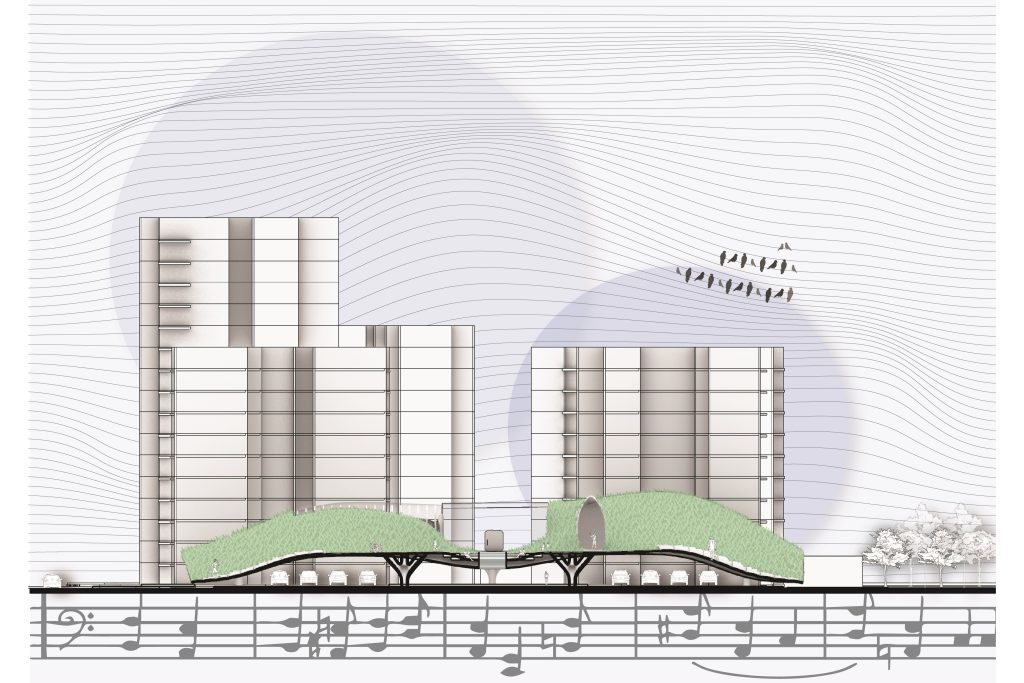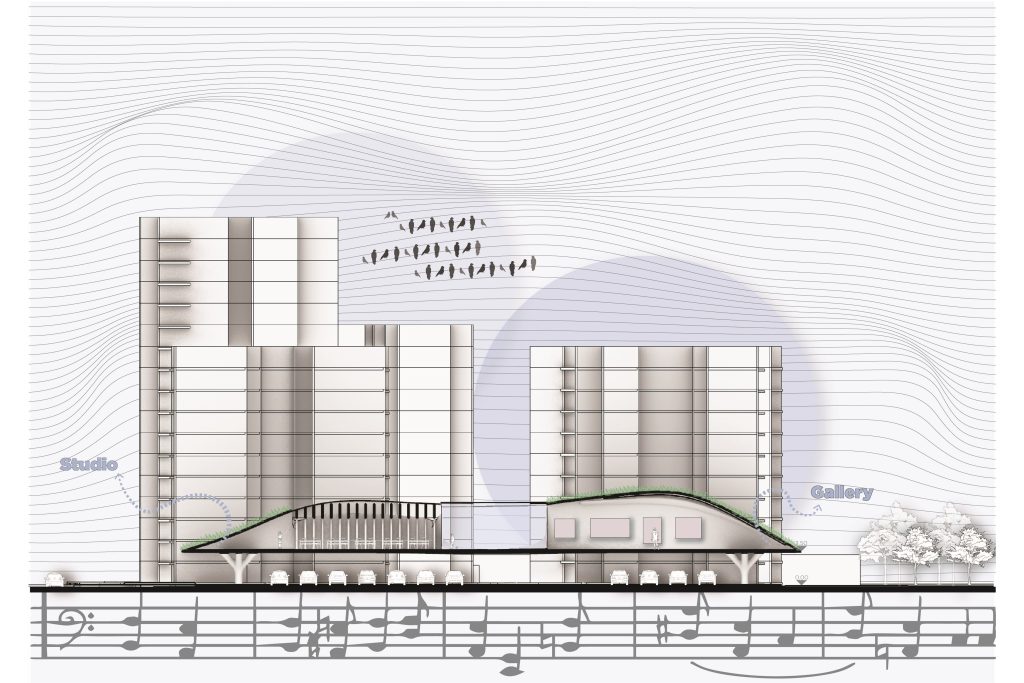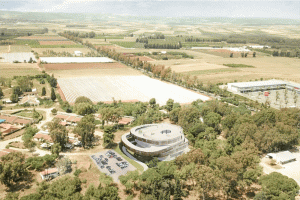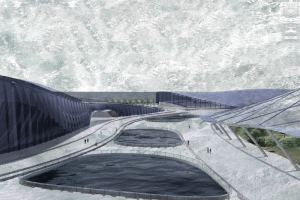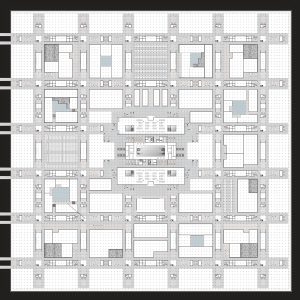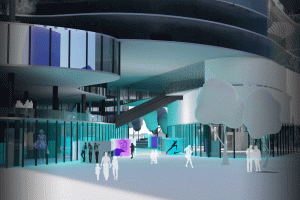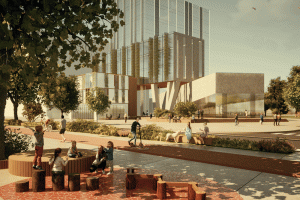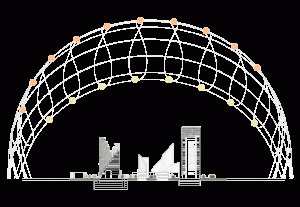Sense & Sensibility
Our hearing capability is always activated, and we do not have the ability to turn our ears off, even when we are asleep. The sense of hearing in general and the act of listening in particular are important elements in the human experience, as they influence the way we perceive, feel, and remember places. One human factor responsible for activating our hearing and its influence on us is the field of music. The development of music, in all its genres, has spread throughout human history and has brought with it cultural changes and influences on human life and its built environment. The common guiding line for all genres is the structures that lead to the creation of a musical work. In other words, the structural rules of music are an equal point to how we perceive the process of building a foundation through the course of architectural design.
Like the effect of music on the listener, the role of space or architectural space is to instill a feeling within the visitor, to move something within them. Space provides a platform for connecting people, developing different interpretations of the space, provoking discussion, arousing emotion, and, above all, activating the collective senses. However, the way in which everyday spaces are planned in Israel today (i.e., the spaces between residential buildings in neighborhoods) denies the complete experience that architecture can provide, if only it is allowed room for creativity and sensual planning. The existing situation does not encourage a feeling of belonging, and spaces are lacking that facilitate interactions and experiences between residents and their surroundings. This places architects and users in a situation of monotony, emptiness, and the loss of broad sensory potential. Therefore, in my project, I present how the values, history, and foundation on which music is based can be combined to revitalize the current hibernating state of neighborhood planning. The design of spaces is created by translating musical building blocks into physical and architectural meanings. In this way, music is used as an instigator for planning and not just as an inspiration . The spaces are adapted to the neighborhood in which they are located to address any shortages in public programming frameworks. As a result, they provide a platform for experiential and sensory revitalization and human connection. The overall design produces a renewed intersection of values between the two worlds and contributes to conventional and everyday architecture multilayered sense experience, which has largely been ignored in contemporary Israeli design.





